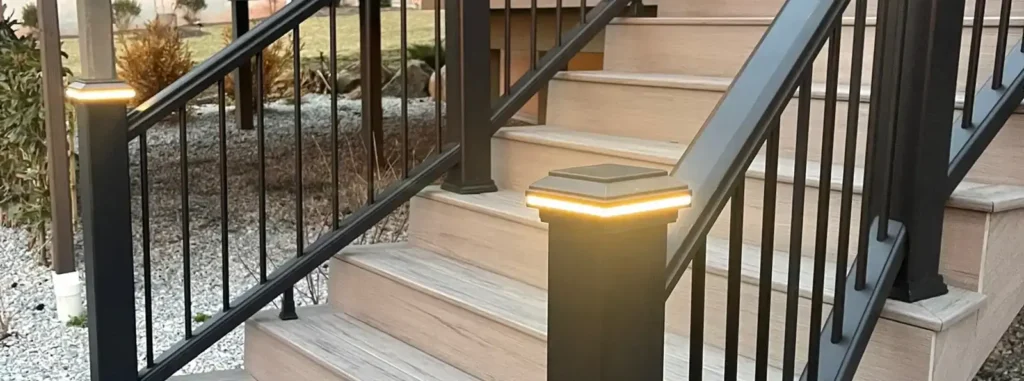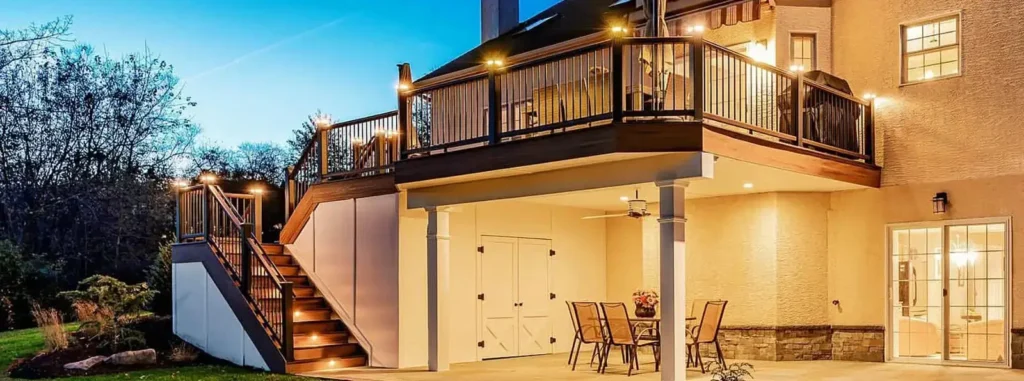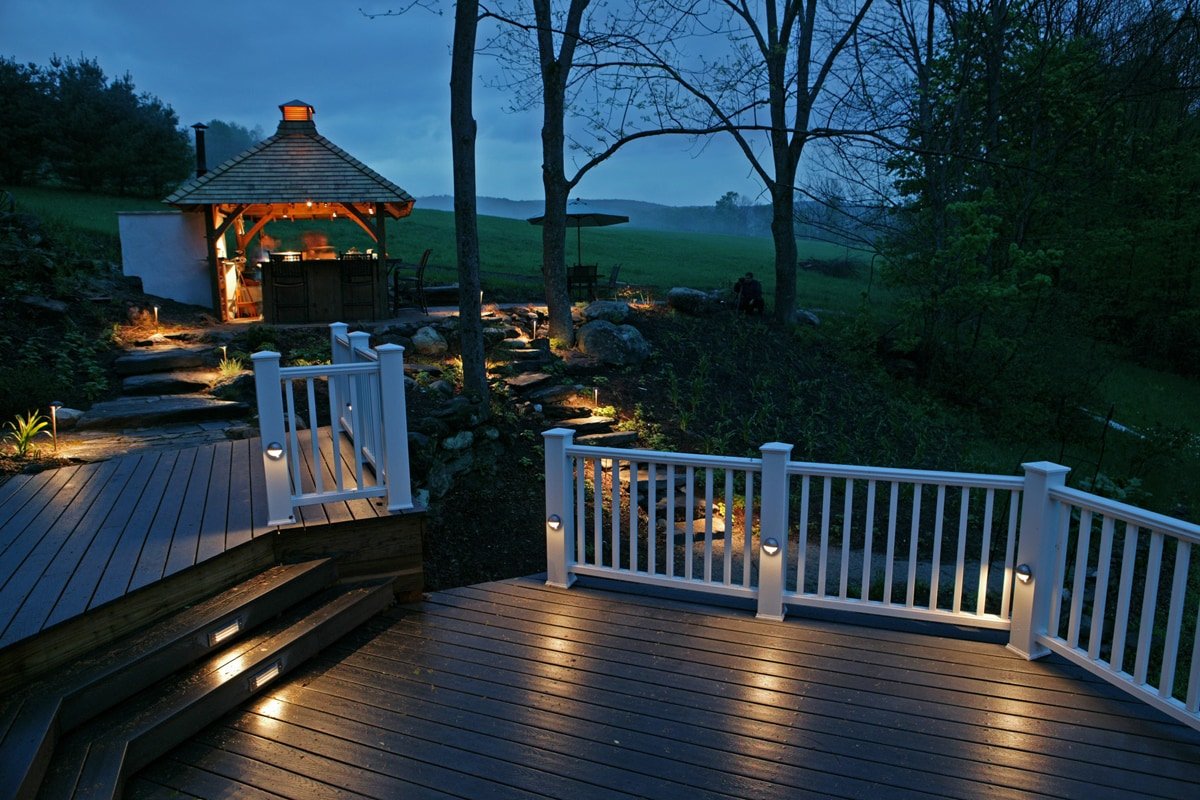
- FREE Shipping on all orders! Limited time!
- support@tru-scapes.com

Imagine stepping into your backyard after sunset, with soft, ambient lights guiding your way across the deck and illuminating your garden features. It’s all possible thanks to an essential component often overlooked: the low-voltage transformer. Whether you’re installing different types of outdoor deck lighting options, including deck lights, pathway accents, and garden features, understanding the role of a transformer can elevate your outdoor space.
In this guide, we’ll cover everything you need to know about low-voltage transformers, from choosing the right outdoor lighting power supply to practical tips for maximizing performance. Let’s shed some light on this crucial piece of the outdoor lighting puzzle!
A low-voltage transformer converts your home’s standard 120-volt electrical current to a safer 12- or 24-volt output suitable for outdoor lighting systems. This ensures that your lighting setup is both energy-efficient and safe for long-term use.
For more on energy-efficient lighting, check out the DOE’s outdoor lighting guide.

A low-voltage transformer works by stepping down the electrical current through a process called electromagnetic induction. Here’s a breakdown of how it functions:
When selecting a transformer for your outdoor lighting, it’s essential to understand the different options:
Type | Key Features | Best Use |
Magnetic Transformer | Durable and built to handle high loads | Larger lighting setups |
Electronic Transformer | Lightweight and cost-effective | Smaller installations |
Smart Transformer | Wi-Fi and app-controlled | Homeowners seeking automation and remote control |
If your deck lighting system involves multiple zones or dimmable options, consider a smart transformer for customizable control. For an overview of smart color-changing setups, visit this guide on using color-changing lights.

Here’s a step-by-step guide to help you choose the right transformer for your outdoor lighting power supply:
Add up the wattage of all your connected lights. Your transformer should have a capacity at least 20% higher than the total to prevent overload.
Example:
Longer wire runs can cause voltage drop, leading to dim lights. To avoid this:
Ensure the transformer has a weatherproof rating (e.g., IP65) to withstand outdoor elements.
Not necessarily! Low-voltage transformers are DIY-friendly. However, if you’re adding multiple zones or syncing with smart home systems, professional installation may be beneficial.
Overloading the transformer can lead to system failure or overheating. Always choose a transformer with 20% more capacity than your system’s total wattage.
Most high-quality transformers last between 10 to 15 years with proper maintenance.

Smart transformers bring convenience and control to your outdoor space. With Wi-Fi-enabled models, you can:
For more on choosing smart lighting products, see Consumer Reports’ smart home hub comparisons.
Imagine hosting a backyard party where you adjust the deck lights’ brightness or switch to a festive color palette—all from your phone.
Low-voltage transformers are the unsung heroes of outdoor lighting, providing safe, efficient, and versatile power for your deck, fence, and landscape lights. Whether you’re setting up a cozy deck retreat or enhancing curb appeal with pathway lights, choosing the right transformer is key.
Ready to upgrade your outdoor space? Explore our latest deck lighting solutions and find the perfect low-voltage transformer to bring your vision to life. Need more tips? Contact us for expert guidance!

Does your beautiful deck feel like an island once the sun goes down? You’ve created a perfect space for relaxing

That magical glow of a perfectly lit deck, transforming it from a simple wooden platform into a true extension of